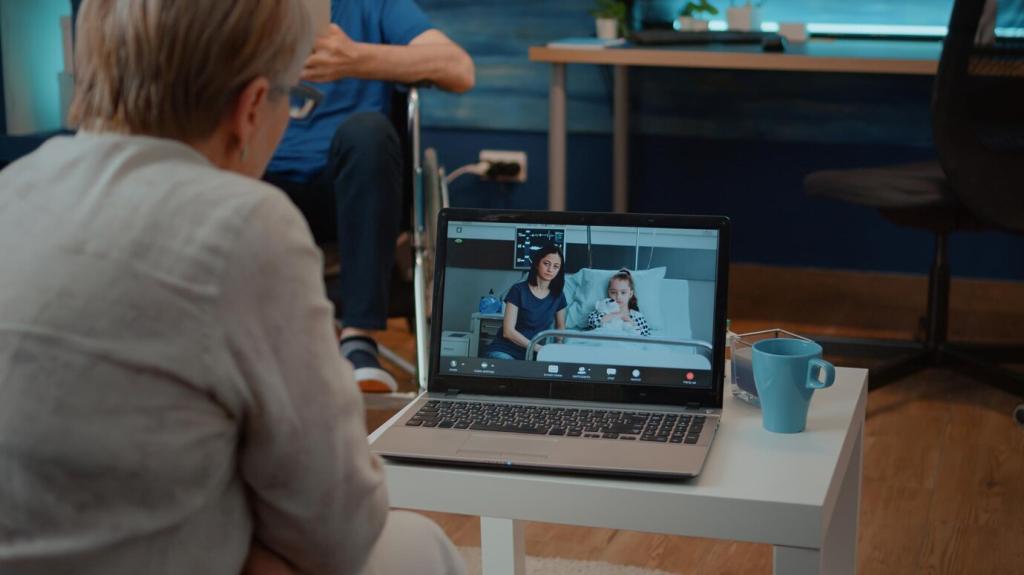Customized Stress Reduction Plans for Remote Teams
Today’s chosen theme: Customized Stress Reduction Plans for Remote Teams. Welcome! Here we explore practical, human-centered methods to lower stress across distributed workplaces—without sacrificing momentum or morale. Expect real stories, flexible playbooks, and simple routines you can adopt this week. Join the conversation, share your team’s challenges, and subscribe for ongoing templates and experiments tailored to remote realities.
Diagnose Before You Prescribe: Understanding Remote Stress Signals

Short, recurring pulse surveys detect trends without survey fatigue. Pair them with optional, anonymous voice notes so nuance isn’t lost. Encourage responses by closing the loop with clear changes you’ll make. When people see action, they keep sharing, giving you better data to tailor interventions.
Archetypes, Not Stereotypes
Create lightweight archetypes—Focus-First Engineer, Meeting-Heavy Manager, Caregiver Multitasker, Global Collaborator—to guide tailored practices. Offer optional paths, never mandates. Let individuals mix techniques that match their rhythms, from deep-work blocks to camera-optional policies and async collaboration norms.
Co-Creation Over Top-Down Edicts
Invite team members to propose their own boundaries and rituals. Use structured workshops or asynchronous boards to gather ideas. This builds psychological ownership, reduces resistance, and ensures the final plan reflects real constraints, not assumptions made far from the people doing the work.
Iterate With Small Bets
Pilot micro-experiments for two weeks—like no-meeting mornings or a four-hour quiet window. Track perceived stress and output quality. Keep what helps, discard what doesn’t, and celebrate learnings. Iteration turns stress reduction from a one-off initiative into an evolving, supportive system.

Rituals and Routines: Daily Practices That Lower Stress
Establish shared focus windows and standard status signals like ‘Heads Down’ or ‘Deep Work Until 2 PM’. Bake signals into your chat tool, so interruptions drop without drama. Clear norms reduce guilt and guesswork, protecting concentration while keeping collaboration smooth and respectful.
Rituals and Routines: Daily Practices That Lower Stress
Encourage 3–5 minute resets: stretch breaks, breath cycles, hydration prompts, or walking one-on-ones. Make them visible in calendars and model them as leaders. Small, regular recoveries stabilize energy and help teams avoid the boom-bust cycles that exhaust remote workers over time.

This is the heading
Lorem ipsum dolor sit amet, consectetur adipiscing elit. Ut elit tellus, luctus nec ullamcorper mattis, pulvinar dapibus leo.

This is the heading
Lorem ipsum dolor sit amet, consectetur adipiscing elit. Ut elit tellus, luctus nec ullamcorper mattis, pulvinar dapibus leo.
Healthy Environments: Ergonomics, Tools, and Digital Wellbeing
Offer stipends or guidelines for chairs, lighting, and external keyboards. Share quick posture resets and eye-rest techniques. Comfortable setups reduce micro-stress, headaches, and irritability, making focused work feel physically sustainable over long stretches at home.

Healthy Environments: Ergonomics, Tools, and Digital Wellbeing
Default to quiet hours, batched notifications, and app-specific focus modes. Encourage teams to group similar tasks and avoid context switching. Configure toolkits so the quiet choice is the easy choice, lowering cognitive strain and decision fatigue for everyone involved.
Resilience Protocols: From Early Signals to Recovery Plans
Early Warning Indicators
Track lead indicators like response-time delays, rising meeting conflicts, or repeated after-hours activity. Pair metrics with human check-ins. Early detection allows compassionate interventions—rebalancing priorities, redistributing work, or introducing temporary support before stress hardens into burnout.
Support Pathways and Confidential Help
Document confidential channels for mental health support and coaching. Normalize their use in onboarding. Provide manager scripts for sensitive conversations, emphasizing consent and choice. Knowing where to turn reduces anxiety and encourages people to seek help sooner, not later.
Recovery Sprints and Workload Throttling
Introduce short recovery sprints with reduced meeting load, lighter goals, or paired work. Make throttling an accepted practice, not a stigma. Transparent, team-level adjustments protect delivery while honoring human limits—proving that sustainable pace is a strategic advantage, not a luxury.
Join our mailing list
